Related Research Articles
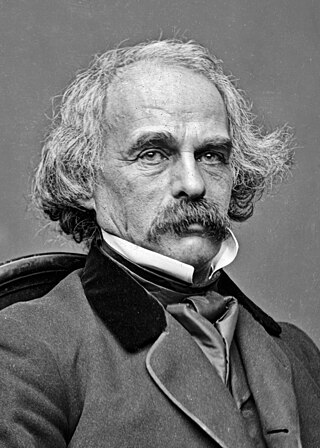
Nathaniel Hawthorne was an American novelist and short story writer. His works often focus on history, morality, and religion.
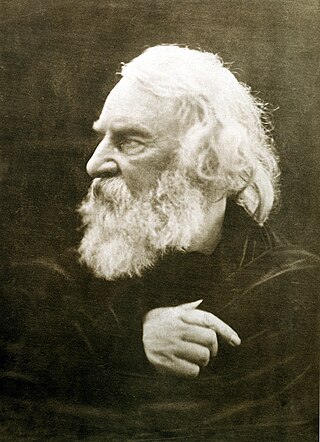
Henry Wadsworth Longfellow was an American poet and educator. His original works include the poems "Paul Revere's Ride", "The Song of Hiawatha", and "Evangeline". He was the first American to completely translate Dante Alighieri's Divine Comedy and was one of the fireside poets from New England.
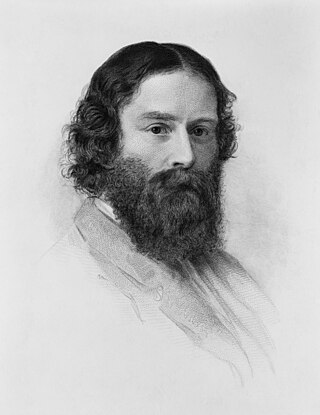
James Russell Lowell was an American Romantic poet, critic, editor, and diplomat. He is associated with the fireside poets, a group of New England writers who were among the first American poets that rivaled the popularity of British poets. These writers usually used conventional forms and meters in their poetry, making them suitable for families entertaining at their fireside.

Maria White Lowell was an American poet and abolitionist. Her poems were privately printed by her husband, James Russell Lowell, the poet, two years after her death.

Evangeline, A Tale of Acadie is an epic poem by the American poet Henry Wadsworth Longfellow, written in English and published in 1847. The poem follows an Acadian girl named Evangeline and her search for her lost love Gabriel during the time of the Expulsion of the Acadians.

Joseph Emerson Worcester was an American lexicographer who was the chief competitor to Noah Webster of Webster's Dictionary in the mid-nineteenth-century. Their rivalry became known as the "dictionary wars". Worcester's dictionaries focused on traditional pronunciation and spelling, unlike Noah Webster's attempts to Americanize words. Worcester was respected by American writers and his dictionary maintained a strong hold on the American marketplace until a later, posthumous version of Webster's book appeared in 1864. After Worcester's death in 1865, their war ended.

The Courtship of Miles Standish is an 1858 narrative poem by American poet Henry Wadsworth Longfellow about the early days of Plymouth Colony, the colonial settlement established in America by the Mayflower Pilgrims.

The Longfellow House–Washington's Headquarters National Historic Site is a historic site located at 105 Brattle Street in Cambridge, Massachusetts. It was the home of noted American poet Henry Wadsworth Longfellow for almost 50 years, and it had previously served as the headquarters of General George Washington (1775–76).

Twice-Told Tales is a short story collection in two volumes by Nathaniel Hawthorne. The first volume was published in the spring of 1837 and the second in 1842. The stories had all been previously published in magazines and annuals, hence the name.

Thomas Gold Appleton, son of merchant Nathan Appleton and Maria Theresa Gold, was an American writer, an artist, and a patron of the fine arts. Henry Wadsworth Longfellow became his brother-in-law after marrying Appleton's sister Frances.

Samuel Worcester Rowse was an American illustrator, lithographer, and painter. He was most famous for his drawings of Ralph Waldo Emerson and Henry David Thoreau. Rowse is also well known for his lithograph, The Resurrection of Henry Box Brown at Philadelphia.
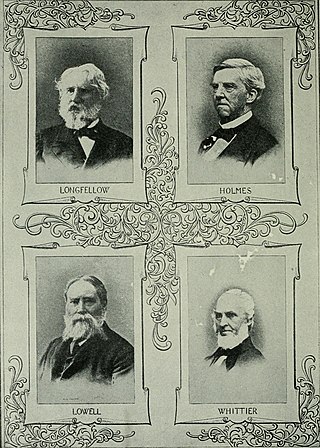
The fireside poets – also known as the schoolroom or household poets – were a group of 19th-century American poets associated with New England. These poets were very popular among readers and critics both in the United States and overseas. Their domestic themes and messages of morality presented in conventional poetic forms deeply shaped their era until their decline in popularity at the beginning of the 20th century.

Tales of a Wayside Inn is a collection of poems by American poet Henry Wadsworth Longfellow. The book, published in 1863, depicts a group of people at the Wayside Inn in Sudbury, Massachusetts as each tells a story in the form of a poem. The characters telling the stories at the inn are based on real people. The compilation, which Longfellow originally wanted to title "The Sudbury Tales", proved to be popular and he issued two additional series in the 1870s.

Samuel Longfellow was an American clergyman and hymn writer.

"The Village Blacksmith" is a poem by Henry Wadsworth Longfellow, first published in 1840. The poem describes a local blacksmith and his daily life. The blacksmith serves as a role model who balances his job with the role he plays with his family and community. Years after its publication, a tree mentioned in the poem was cut down and part of it was made into an armchair which was then presented to Longfellow by local schoolchildren.
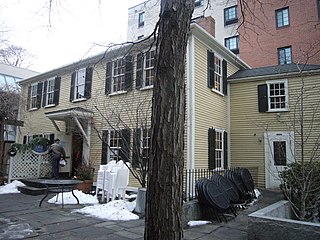
The Dexter Pratt House is an historic house in Cambridge, Massachusetts. It is remembered as the home of Dexter Pratt, the blacksmith who inspired the poem "The Village Blacksmith" by Henry Wadsworth Longfellow.

Ticknor and Fields was an American publishing company based in Boston, Massachusetts. Founded as a bookstore in 1832, the business would publish many 19th century American authors including Ralph Waldo Emerson, Nathaniel Hawthorne, Henry James, Henry Wadsworth Longfellow, Harriet Beecher Stowe, Henry David Thoreau, and Mark Twain. It also became an early publisher of The Atlantic Monthly and North American Review.

Hyperion: A Romance is one of Henry Wadsworth Longfellow's earliest works, published in 1839. It is a prose romance which was published alongside his first volume of poems, Voices of the Night.
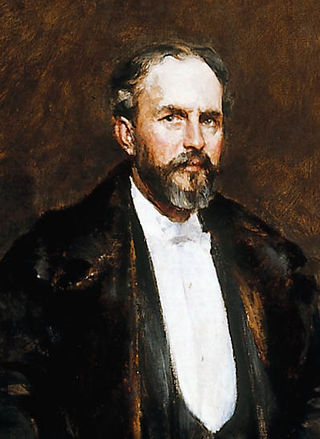
Ernest Wadsworth Longfellow (1845–1921) was an American artist in Boston, Massachusetts, and New York. He was the son of Henry Wadsworth Longfellow.

Alice Mary Longfellow was a philanthropist, preservationist, and the eldest surviving daughter of the American poet Henry Wadsworth Longfellow. She is best known as "grave Alice" from her father's poem "The Children's Hour".
References
- ↑ Arvin, Newton. Longfellow: His Life and Work. Boston: Little, Brown and Company, 1963: 26.
- ↑ Williams, Cecil B. Henry Wadsworth Longfellow. New York: Twayne Publishers, Inc., 1964: 66.
- ↑ Wagenknecht, Edward. Henry Wadsworth Longfellow: Portrait of an American Humanist. New York: Oxford University Press, 1966: 6.
- ↑ Wagenknecht, Edward. Henry Wadsworth Longfellow: Portrait of an American Humanist. New York: Oxford University Press, 1966: 7.
- ↑ Wagenknecht, Edward. Henry Wadsworth Longfellow: Portrait of an American Humanist. New York: Oxford University Press, 1966: 162.
- 1 2 Williams, Cecil B. Henry Wadsworth Longfellow. New York: Twayne Publishers, Inc., 1964: 109.
- ↑ Williams, Cecil B. Henry Wadsworth Longfellow. New York: Twayne Publishers, Inc., 1964: 114.
- ↑ Mellow, James R. Hawthorne in His Times. Boston: Houghton Mifflin Company, 1980: 78–79. ISBN 0-395-27602-0